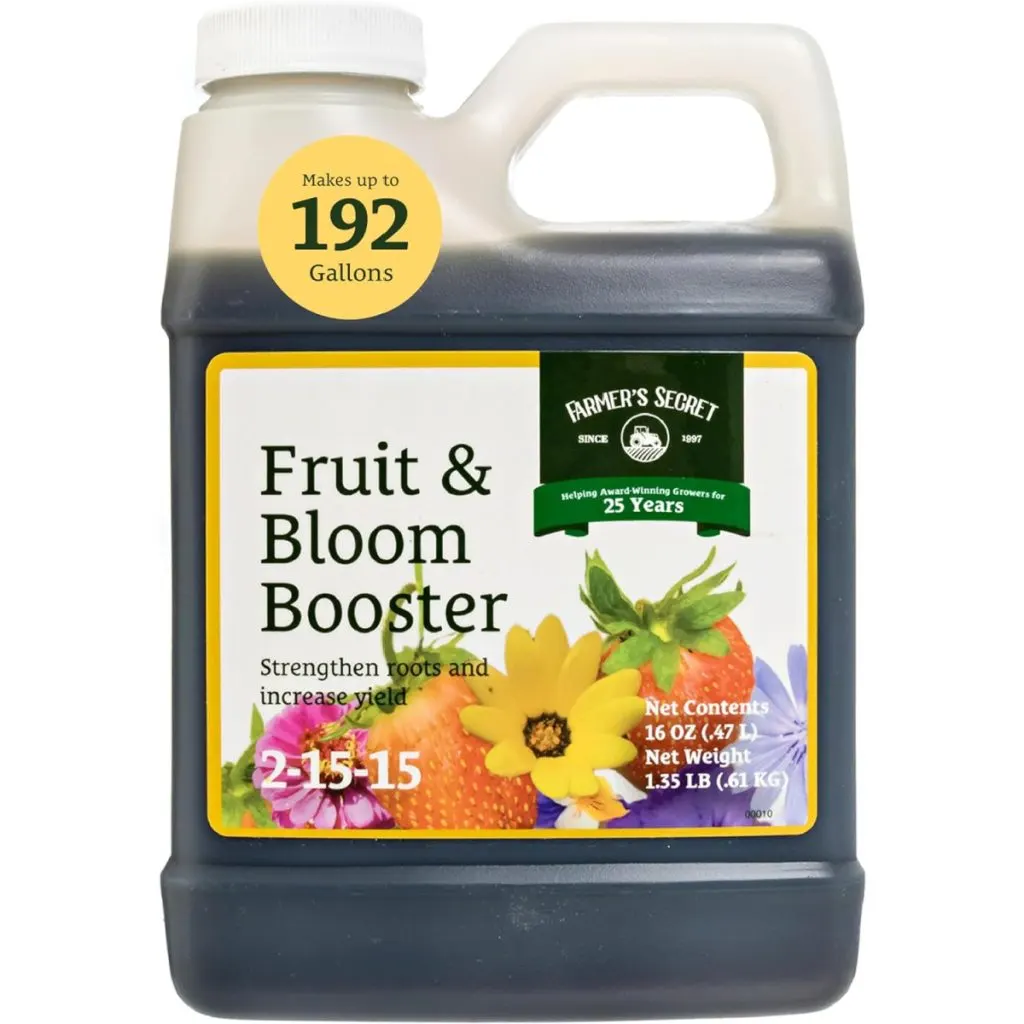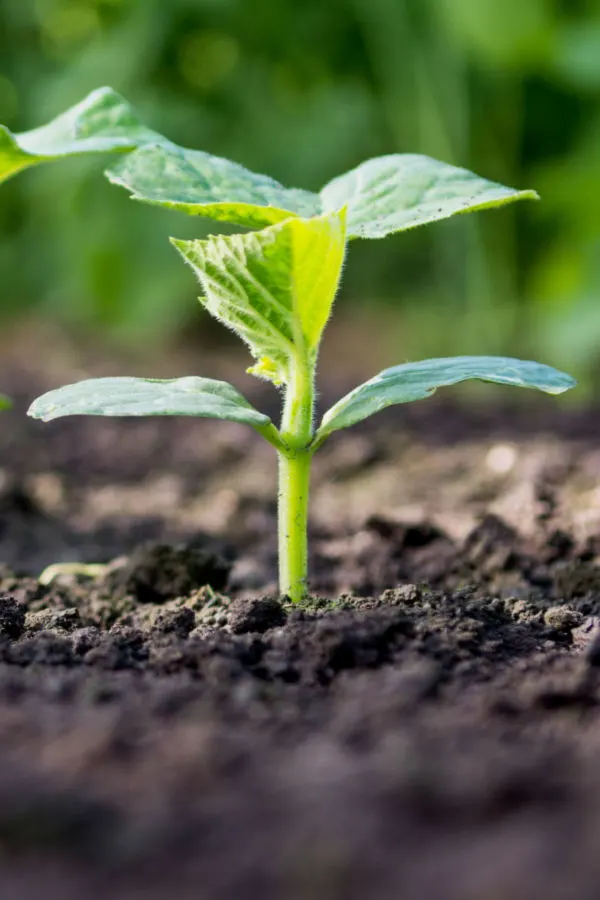When it comes to growing healthy cucumber plants that produce loads of delicious cucumbers all season long – there is no better path to success than to fertilize your plants on a regular basis.
As you will see in today’s article, what, how and when you feed your plants matters greatly in just how big of a crop your plants can produce. Cucumber plants are fairly heavy feeders from the soil. Like most vegetable plants, they require a good amount of nutrients to develop strong roots and foliage early on.
That early growth is huge for cucumbers. With a healthy set of roots, leaves and stems, they can easily absorb power and energy from both the soil and the sun to really develop and grow quickly. And that, of course, sets the stage for strong flowering and fruiting later as they mature.

However, as cucumber plants get to that flowering and fruiting stage, although they still need nutrients, they begin to require a different type of energy – one that can help them switch from simply growing to instead powering strong flowers and fruit!
The good news is that by giving your cucumber plants the right type of power at each stage – you can all but ensure your plants will grow strong and healthy – and be highly productive. And the best news of all? It’s easy to do!
How To Fertilize Cucumber Plants
Fertilizing Young Cucumber Plants
During the first six to eight weeks of a cucumber plant’s life, it needs to grow. And the faster it develops strong roots, stems and a full set of leaves – the better.
Cucumber plants use the process of photosynthesis to turn sunlight into energy. And the more leaves they have, the more energy they can convert. So what does it take to promote strong plant growth? It all comes to down to having a strong source of nitrogen.
The Power Of Nitrogen – How To Fertilize Cucumber Plants
Nitrogen is one of the most important nutrients of all for pure growth. It is the same nutrient that powers lawns to a dark, deep and lush green. For cucumber plants early on, a steady source of nitrogen will do wonders for fast growth.
That is exactly why it’s best to select an all purpose granular fertilizer to feed young cucumber plants. Selecting a fertilizer with a 10-10-10 or a 15-15-15 N-P-K percentage of nitrogen, phosphorous and potassium is ideal. Affiliate Product Link: Southern Ag All Purpose Granular Fertilizer 10-10-10
The equal amount of nitrogen will help power early plant growth, while the phosphorous and potassium will set the plants up for production later on. Although you can use a liquid fertilizer early on, granular products are really best for early fertilizing.
Granular fertilizers feed the roots of plants slowly as they break down into the soil. This allows plants a steady supply of the perfect nutrients needed early on. In this case, it’s the nitrogen they need most. For best results, fertilize when you plant your transplants – and then again two to three weeks later.
We actually like to plant from seed – so we allow plants to be up for about 10 days before fertilizing at this stage. See our article: The Best Way To Plant Cucumbers – Why To Plant Seeds Instead Of Plants!
Then, once plants start to mature – it’s time to switch how and what you feed your plants. And this time – it’s all about giving a large amount of the two most important nutrients cucumbers need for production – phosphorous and potassium!
How To Fertilize Cucumber Plants For A Big Harvest
When your plants begin to produce their first flowers, it’s time to fertilize your plants with a different method and a different dose of power.
Listen In Below To Our Podcast On Growing A Great Crop Of Cucumbers!
Instead of using granular fertilizer that breaks down slowly, it’s now more important to feed your cucumbers with a liquid source of energy. Liquid fertilizers absorb both through a plants roots in the soil and through their leaves.
Because of that, nutrients can absorb quickly and go to work fast. And when trying to develop blooms and fruit for cucumber plants, that’s huge! But even more important, it’s vital to now feed them a fertilizer that is much lower in nitrogen, and way higher in phosphorous and potassium.
Why? Because those two nutrients are incredibly important to help plants form flowers and fruit. Meanwhile, you can back off of the nitrogen to help the plant switch its focus from growing – to simply powering more cucumber production!
Giving Your Cucumber Plants What They Need – How To Fertilize Cucumber Plants
To power production, look for a liquid soluble fertilizer with an N-P-K ratio that has at least double to triple the amount of phosphorous and potassium to nitrogen. We love the Farmer’s Secret for this as it really leans toward the two key nutrients! Affiliate Product Link: Farmer’s Secret Fruit & Bloom Booster Fertilizer (32oz) – Super Concentrated

This will allow the plants to have the nutrients they need to focus more on production than growing. Because of that, you will want to supply them more regularly with the liquid fertilizer – but with lighter feedings.
We actually like to dilute the recommended rate to about 1/2 strength. Why? Because it lets us fertilize every ten days or so to keep a steady supply of power coming to our plants. Over the years, it has been more helpful in keeping plants productive than giving them full doses every two or three weeks.
No matter which route you choose, the real key is to give your cucumber plants a liquid dose with a big increase of phosphorous and potassium!
Here is to powering your cucumber plants this year with the perfect dose of fertilizer. And, of course, to your best harvest ever! Happy Gardening – Jim and Mary.
Old World Garden
Jim and Mary Competti have been writing gardening, DIY and recipe articles and books for over 15 years from their 46 acre Ohio farm. The two are frequent speakers on all things gardening and love to travel in their spare time.
As always, feel free to email us at thefarm@owgarden.com with comments, questions, or to simply say hello! You can sign up for our free email list in the subscribe now box in the middle of this article. Follow us on Facebook here : OWG Facebook. This article may contain affiliate links.

